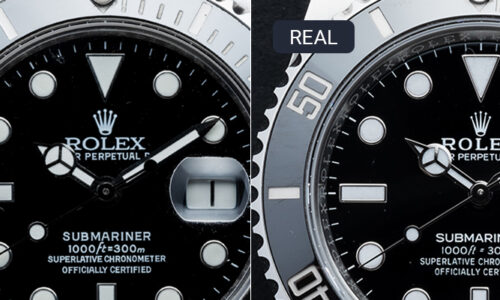The Evolution of Timekeeping: A Journey Through the Rich Tapestry of Watch History
Watches, those timeless companions adorning our wrists, are not just instruments for measuring time; they are storytellers, narrating the intricate history of human ingenuity and technological progress. In this deep dive into the evolution of timekeeping, we embark on a captivating journey through centuries, exploring the transformation of timepieces from their humble beginnings to the sophisticated marvels we cherish today.
1. The Dawn of Sundials and Water Clocks: Ancient Timekeeping
Our journey begins in ancient civilizations where rudimentary timekeeping devices laid the foundation for the watches we know today. Sundials, with their reliance on the sun’s position casting shadows on calibrated surfaces, were among the earliest timekeepers. Water clocks, or clepsydra, used the controlled flow of water to measure time intervals. These ingenious inventions marked the initial steps in humanity’s quest to capture and quantify the elusive concept of time.
2. Mechanical Marvels: From Pocket Watches to Wristwatches
The 16th century witnessed a significant leap forward with the introduction of mechanical timepieces. The Nuremberg Egg, dating back to the 16th century, is considered one of the earliest portable watches. However, it wasn’t until the 17th century that pocket watches gained popularity, becoming fashionable accessories among the elite.
The 19th century saw a revolutionary shift with the advent of wristwatches. Originally designed for military use during the Boer War, wristwatches gained prominence during World War I when soldiers found them more practical on the battlefield. This shift from pocket to wrist marked a turning point, democratizing access to timekeeping and transforming watches into everyday essentials.
3. The Precision Revolution: Chronometers and Marine Chronometers
Navigational challenges at sea drove advancements in timekeeping precision. John Harrison’s marine chronometer, developed in the 18th century, was a groundbreaking invention. These highly accurate timepieces allowed sailors to determine their longitude with unprecedented precision, revolutionizing maritime navigation and exploration.
The quest for precision continued into the 19th century, culminating in the creation of railroad chronometers. These specialized watches played a vital role in ensuring the safety of train travel by maintaining accurate timekeeping, thereby preventing collisions and accidents.
4. The Birth of the Wristwatch Industry: The 20th Century
The 20th century witnessed the rapid industrialization of the wristwatch. The iconic Rolex Oyster, introduced in the 1920s, pioneered waterproofing and dust protection, enhancing the durability and functionality of wristwatches. The 1950s brought about the mass production of automatic movements, making watches more accessible to a broader audience.
Quartz technology, a groundbreaking development in the 1960s, led to the creation of battery-powered watches. This innovation not only revolutionized the accuracy of timekeeping but also paved the way for the quartz crisis, a period of upheaval that saw the decline of traditional Swiss watchmaking and the rise of Japanese watch manufacturers.
5. The Quartz Revolution and Renaissance: A Tale of Resilience
The advent of quartz technology threatened the traditional watch industry, as accurate and affordable quartz watches flooded the market. However, Swiss watchmakers responded with resilience and innovation. Instead of conceding defeat, they shifted their focus to high-quality, precision timepieces that emphasized craftsmanship and luxury. This marked the beginning of the quartz crisis’s resolution and the renaissance of mechanical watches as coveted symbols of status and artistry.
6. Contemporary Horology: Fusion of Tradition and Technology
In the 21st century, the watch industry has witnessed a harmonious fusion of tradition and cutting-edge technology. Smartwatches have emerged as a new frontier, integrating connectivity and functionality with classic timekeeping. These wearable devices offer a plethora of features, from health monitoring to GPS navigation, appealing to a tech-savvy audience.
Luxury watchmakers continue to push boundaries, producing intricate complications and limited-edition timepieces that showcase the pinnacle of craftsmanship. Meanwhile, independent watchmakers have gained recognition for their innovative designs and a return to traditional, handcrafted techniques.
7. Sustainable Horology: A Modern Approach to Timekeeping
As environmental consciousness grows, the watch industry is embracing sustainability. From recycled materials to eco-friendly manufacturing processes, brands are aligning their practices with a greener ethos. The shift towards sustainable horology reflects an awareness of the industry’s impact on the planet and a commitment to responsible watchmaking.
Conclusion: A Tapestry of Time
The evolution of timekeeping is a rich tapestry woven with threads of innovation, perseverance, and a relentless pursuit of precision. From ancient sundials to contemporary smartwatches, each chapter in the history of watches tells a unique story of human creativity and the relentless march of progress.
At Watch Economist, we celebrate this fascinating journey by curating a collection that reflects the diverse facets of watch history. Each timepiece we offer is a testament to the enduring legacy of timekeeping. As you explore our selection, remember that you are not just acquiring a watch; you are becoming a part of a timeless narrative that spans centuries. Happy timekeeping!



I have read a few good stuff here. Certainly value bookmarking for revisiting.
I wonder how much attempt you place to create any such great informative web site.